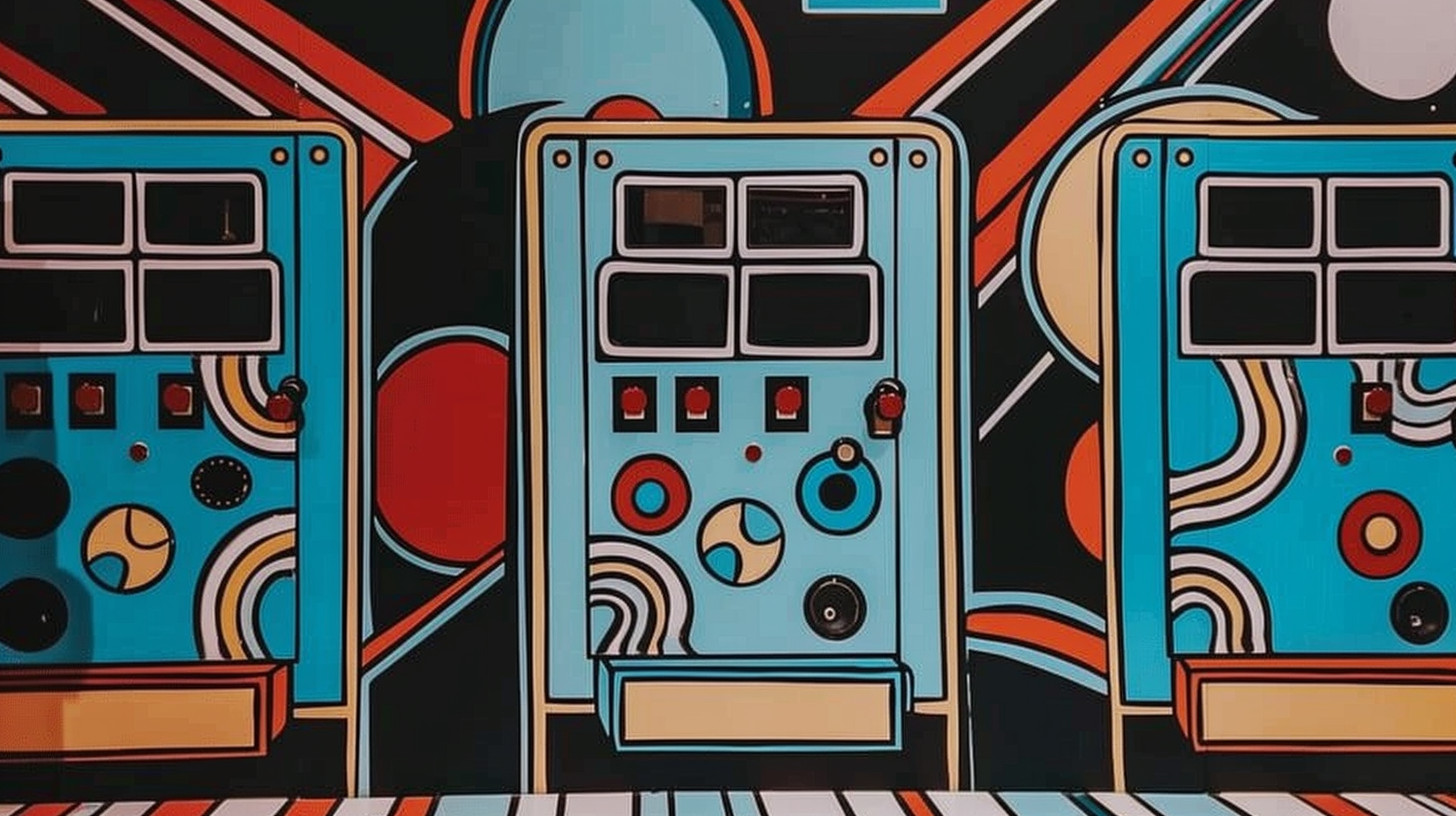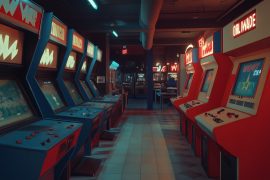I still have dreams about the sound. That chaotic symphony of electronic bleeps, bloops, explosions, and synthesized music all competing for attention in a dimly lit room full of glowing cabinets. The constant percussion of buttons being smashed and joysticks being yanked. The distinctive mechanical ka-chunk of quarters sliding into slots. Sometimes I wake up at 3 AM, certain I just heard the Galaga attack pattern startup sound, that ascending electronic warble that meant business was about to pick up. You can emulate these games perfectly now, play them on your phone or console or PC, but you can’t replicate that soundscape, that feeling. The arcade was more than games—it was a place, a culture, a moment in time that shaped me more than I realized.
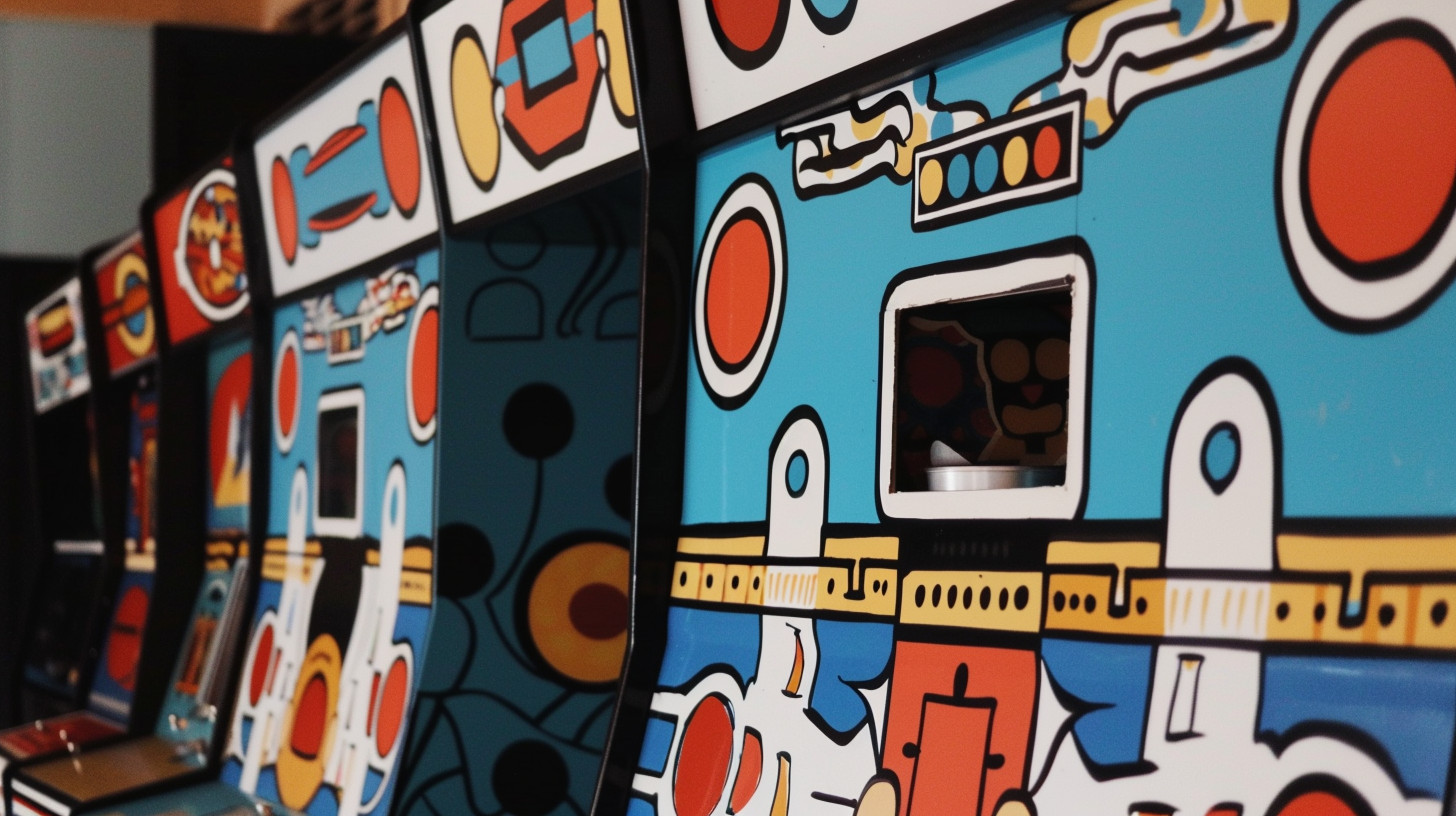
My first real arcade experience happened around 1984 at the Lakeside Mall in Sterling Heights, Michigan. I was about seven years old, tagging along on a shopping trip with my mom and older brother Dave. We passed by this dark storefront with flashing lights and strange sounds spilling out into the mall corridor. I’m pretty sure I physically pulled my mom toward it like a cartoon character floating toward a pie cooling on a windowsill. The place was called “The Gold Mine,” which seemed appropriate given how quickly it would vacuum quarters out of my pockets for years to come. That first visit, my mom exchanged a dollar for four quarters and told us to “make them last” while she shopped. Dave immediately ran to Dragon’s Lair, which of course ate his quarters in about 90 seconds. I stood transfixed in front of a Pac-Man cabinet, watching an older kid navigate the blue maze with impressive precision. When he finally lost his last life, he nodded at me and stepped aside. That first quarter, that first game—I lasted maybe 45 seconds before a pink ghost caught me, but I was hooked for life.
Soon, I had mapped out every arcade location within bike-riding distance of our house. The Gold Mine was for weekends when someone could drive me. For independent expeditions, I had three options: the small game room at Chuck E. Cheese, where I’d try to convince my friends’ parents to have birthday parties; the bowling alley arcade, which had a slightly seedy vibe I found thrilling as a kid; and the true hole-in-the-wall, a convenience store called Mack’s that had exactly four arcade cabinets crammed next to the ice cream freezer. The owner, Mr. Mack himself (though in retrospect, probably not his real name), would let me sweep up or stock shelves in exchange for a few quarters when money was tight. He was a gruff old guy who pretended to be annoyed by “you damn kids,” but he always made sure his machines were in perfect working order.
Each arcade had its own personality, its own ecosystem. The mall arcade skewed toward flashier games with broader appeal—the latest racing games with full cockpit setups, the hot new fighting games, whatever had just been featured in Nintendo Power. The bowling alley leaned into sports games and had one of the only Neo Geo MVS cabinets in town, which felt like touching arcade royalty. Chuck E. Cheese was for younger kids, heavy on redemption games that spat out tickets. And Mack’s? He didn’t rotate his games much, so they were classics: Galaga, Ms. Pac-Man, Centipede, and a cocktail cabinet Frogger that had a perpetually sticky control surface from spilled Slurpees.
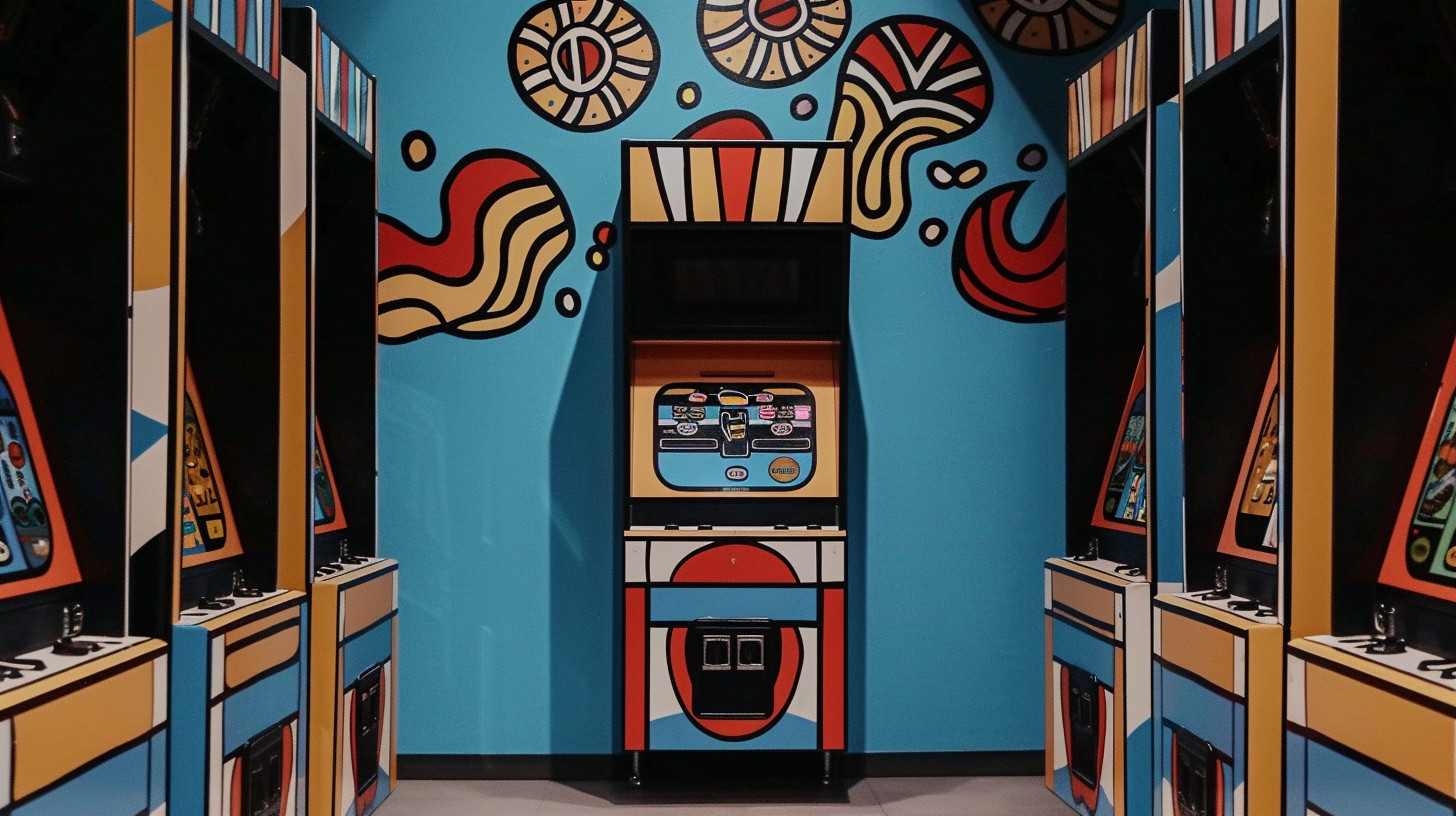
Galaga became my game of choice, my arcade identity. Everyone had one—the game they’d be known for, the cabinet they’d gravitate toward first upon entering an arcade. My friend Tyler was a Tempest wizard, spinning that dial controller with surgical precision. Kenny from down the street could play Defender for what seemed like hours on a single quarter, his hands a blur on those awkwardly positioned buttons. But I was the Galaga kid. I studied the attack patterns, learned when to risk going for the double ship and when to play it safe. I discovered you could position yourself at the edge of the screen and avoid certain attack waves entirely—a trick that felt like I was breaking the matrix. Getting my three initials “MJW” onto that high score table became a point of honor, an arcade baptism.
The cabinet designs themselves were works of art that modern gaming setups can’t touch. Each one had personality, from the side art to the marquee to the control panel layout. They were tactile experiences—Centipede’s trackball had a satisfying heft to it, worn smooth in the middle from thousands of palms. The Star Wars vector game cabinet perfectly mimicked the Millennium Falcon’s flight yoke. Paperboy had actual handlebar controllers that clicked satisfyingly when you turned them. These weren’t just interfaces; they were part of the immersion, custom-built portals into specific digital worlds.
When fighting games exploded onto the scene with Street Fighter II in 1991, the arcade social dynamic shifted dramatically. Suddenly, games weren’t just you against the machine—they were you against the kid standing next to you. I was in middle school then, and SFII became a weird social hierarchy system. The really good players, mostly high school guys, would hold court at the cabinet for hours, quarter after quarter lined up on the dashboard marking challengers in waiting. I saved my lunch money for a week just to get good enough to not be completely embarrassed. I settled on Dhalsim as my fighter—his long-reach attacks let me keep some distance, which suited my defensive playstyle.
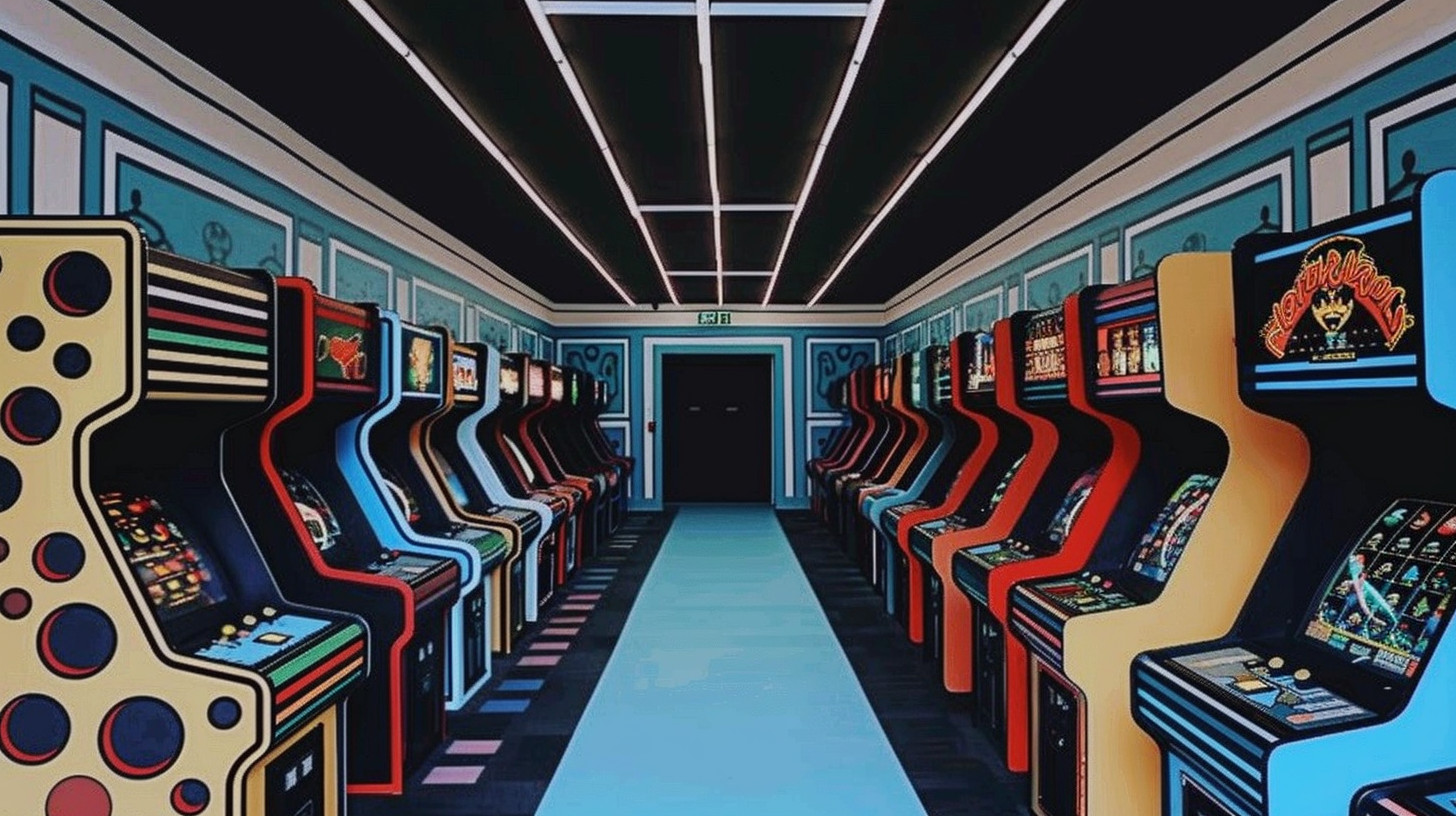
The fighting game boom coincided with my early teenage awkwardness, and weirdly, those cabinets became spaces where social barriers broke down. I remember standing next to a senior high school football player—a guy who wouldn’t acknowledge my existence in a school hallway—both of us studying a third player’s Zangief technique with equal intensity. We’d trade tips, comment on matches, groan collectively at cheap wins. For those moments, the only social currency that mattered was skill, not age or school clique status. When I finally took down a notorious E. Honda player who’d been dominating our local cabinet for weeks, that same football player gave me a high five like we were teammates who’d just scored a touchdown.
Summer vacations meant hunting for new arcade experiences. The Mackinac Island arcade up north became an annual pilgrimage—I’d save quarters all year knowing I’d blow them all in a two-day gaming binge. They had games I’d never seen at home, magical unicorns like the Simpsons four-player cabinet or the X-Men six-player behemoth that required two screens side by side. Beach town boardwalk arcades had their own distinct flavor too—slightly run-down cabinets that had weathered salt air and sticky fingers, usually heavy on skeeball and other ticket games to lure tourists, but often hiding gems in back corners.
The Teenage Mutant Ninja Turtles cabinet ate more of my quarters than possibly any other game. Four-player simultaneous action was mind-blowing at the time, and the cabinet was always surrounded by kids shouting encouragement or advice. “Pizza power-up on the right!” “Watch out for Rocksteady!” “Dude, Donatello’s reach is way better than Michelangelo!” It was cooperative but competitive, everyone wanting to pull their weight while secretly hoping to have the highest score at the end. Finding three random kids to form a temporary turtle team created an instant bond—a quarter-long friendship of shared purpose.
The economics of arcade gaming shaped everything about the experience. These machines were designed with a brutal elegance: difficult enough to swallow your quarters regularly, but rewarding enough to make you think “just one more try” every time. Racing games would let you glimpse the finish line before your time ran out. Fighting games would put you up against an impossibly cheap boss right when you were getting into your groove. Shoot-em-ups would throw overwhelming enemy patterns at you just as you were getting comfortable with the controls. It was frustrating but also pure—these games weren’t hiding their intentions behind subscription models or microtransactions. The deal was straightforward: one quarter, one chance. The games were honest about wanting your money.
That coin-op mentality infected how I approached the games, too. I became obsessed with “maximizing quarter value”—stretching each play session as long as possible. I’d memorize cheap tactics, safe spots, pattern exploitations, anything to keep that quarter working for me. Getting a full hour of play from a single quarter became the ultimate achievement. My arcade friends and I would share these discoveries like precious secrets—”If you stand exactly here during the third boss in Smash TV, he can’t hit you,” or “There’s a 1-up mushroom hidden in this brick that the manual doesn’t tell you about.” This was pre-internet gaming knowledge, passed along through oral tradition like ancient hunting techniques.
The decline happened so gradually I barely noticed it at first. The Gold Mine downsized to a smaller location in the mall, cutting their cabinet count in half. Mack sold his convenience store (and the beloved Galaga machine) around 1996, replaced by a chain that didn’t see the value in arcade games taking up valuable retail space. New arcades opened that were basically Chuck E. Cheese clones—heavy on ticket redemption games, light on actual video game experiences. The remaining traditional arcades became increasingly empty as the PlayStation and Nintendo 64 brought arcade-quality graphics into living rooms.
By my senior year of high school, my arcade pilgrimages had slowed to occasional nostalgia trips. The last great hurrah came with Dance Dance Revolution and its rhythm game siblings, which briefly made arcades destination spots again around 1999-2000. You couldn’t replicate those massive dance platforms at home (yet), and the spectacle of watching people play was half the fun. I was terrible at it—my gangly teenage limbs refused to coordinate in time with the arrows—but I’d still go to watch the truly talented players who would draw actual crowds.
The soundtrack of arcades defined whole chunks of my youth. The Mortal Kombat “Test Your Might” mini-game music still gets my pulse racing slightly. The assertive “Winners Don’t Use Drugs” FBI splash screen that appeared during attract modes. Paperboy’s digitized “Extra! Extra!” call. Those sounds are burned into my brain’s firmware. Modern game music is gorgeous and orchestral and technically superior in every way, but it doesn’t have the insistent, hypnotic quality of those primitive arcade tunes designed to be heard over the din of a crowded game room.
The social dynamics of arcades taught me things no school could. I learned to lose gracefully when my quarter ran out three seconds into a fighting game match. I learned to win gracefully when beating someone who’d been waiting patiently for their turn. I learned to communicate with kids from completely different backgrounds, united only by our love of these electronic challenges. I learned rudimentary economics managing my limited quarter supply. And I learned a weird sort of gaming etiquette—when to offer advice to a struggling player and when to let them figure it out themselves, when it was okay to watch over someone’s shoulder and when it felt intrusive.
Cabinet restoration has become something of a midlife crisis hobby for me. I’ve got a Galaga/Ms. Pac-Man combo cabinet in the basement that I rescued from a closing pizza place five years ago. The process of replacing blown capacitors, rewiring control panels, and hunting down authentic marquee artwork connects me physically to these machines in a way that playing ROMs on an emulator never could. There’s something deeply satisfying about hearing those original sounds coming from the actual hardware, feeling the specific tension of joysticks designed for those particular games. My wife thinks I’m nuts for the hours I spend tweaking vector displays and adjusting RGB levels, but she also admits she gets a kick out of challenging me to Ms. Pac-Man matches on date nights.
The magic of the arcade era wasn’t just in the games themselves—it was in the shared experience, the physical space, the cultural moment. Those dark rooms filled with glowing screens were secular temples where kids from all backgrounds came together to worship at the altar of digital achievement. We didn’t realize we were living through a golden age at the time; we were just following the siren call of the newest, coolest game, one quarter at a time.
But now when I catch that distinctive sound of a 1980s arcade game in a movie or TV show, something Pavlovian happens—my fingers twitch slightly, muscle memory from countless hours wrapped around joysticks and slapping buttons. For a brief moment, I’m transported back to the Gold Mine, pockets heavy with quarters, eyes adjusting to the darkness, scanning the room for an empty Galaga cabinet, ready to challenge the high score table once again. The quarters are gone, the arcades mostly shuttered, but that version of me—wide-eyed, determined, ready to take on whatever digital challenge awaited—he’s still in there somewhere, still hearing those sounds, still feeling that rush when “Player One, Ready!” flashes on the screen.

